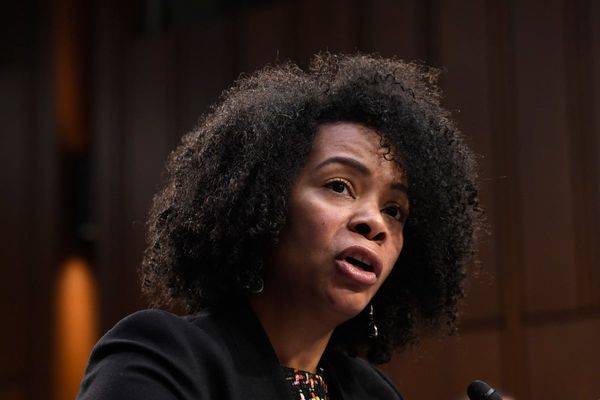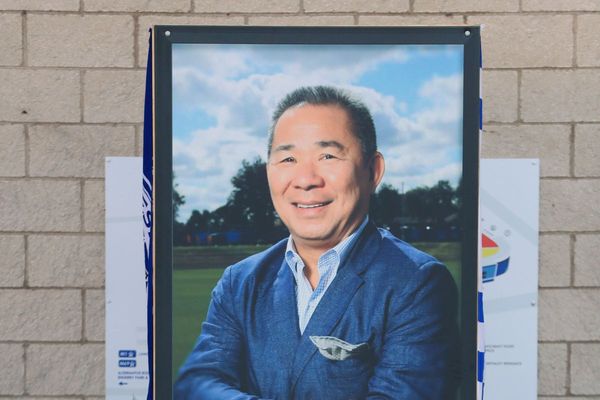
In a better world, Taiwan, a quietly successful East Asian nation, wouldn’t be in the news that much, save perhaps for its victory over COVID-19. But the disturbing possibility of an invasion by China means Taiwan regularly pops up in the headlines. Having long claimed that the island state is a part of the People’s Republic of China (PRC) and needs to be “reunified,” Beijing has been ramping up threats and military provocations, raising fears of a potential invasion or attack. Given that the United States is Taiwan’s major unofficial ally and protector, military intervention by Washington would be very likely in the still unlikely but worryingly possible event of an invasion.
But many people still seem confused about exactly what Taiwan represents. This has led to experts openly questioning whether Taiwan is worth defending and even positing that a Chinese seizure of Taiwan would be inconsequential or inevitable. Sometimes Taiwan is seen as a mere pawn in U.S.-China relations, with little agency of its own other than as a bargaining chip. There have even been comparisons of Taiwan to the Crimean Peninsula, which was annexed by Russia from Ukraine in 2014 without a military response from the European Union or the United States.
Yet Taiwan is no Crimea, whether in global economic importance, military strategic value, or demographically. On the map, Taiwan is a moderately sized island that is geographically tiny compared with China. This obscures the fact that with a population of almost 24 million, Taiwan has as many people as Australia and more than EU countries such as the Netherlands, Greece, and Sweden. When it comes to the United States, Taiwan is smaller in land area than all but nine of the 50 states but has more people than Florida or New York.
Taiwan’s GDP is $636 billion, which puts it just outside the world’s top 20 economies in 21st place, and is Asia’s seventh-largest economy, according to the International Monetary Fund. This is amplified further by its significant position in the global technological chain due to its many information and communications technology firms, which include computer and smartphone manufacturers, chipmakers, and components firms. For instance, Taiwan Semiconductor Manufacturing Co., whose advanced chips power Apple iPhones and iPads, is considered the world’s leading semiconductor manufacturer, well ahead of South Korean, U.S., and Chinese competitors. Taiwanese firms like Quanta and Foxconn are the world’s largest contract electronic and computer manufacturers. If Taiwan is taken over by China, a lot of this vital technology will be in the hands of the Chinese Communist Party (CCP).
Besides technology, Taiwan also holds vital strategic importance due to its geographical location. Along with Japan to the north and the Philippines to its south, Taiwan is part of the “first island chain” along China’s coast that hinders the country’s access to the Pacific Ocean. If Taiwan is occupied by China, this provides Beijing with a free lane into the Pacific, and its military planes, ships, and long-range missiles will be able to threaten U.S. territories such as Guam and even Hawaii. China would also be able to control regional shipping lanes and threaten Japan and be well within striking range of Okinawa, where a large U.S. contingent of more than 25,000 military personnel is stationed. To the south, the Philippines would also have reason to be very nervous as Taiwan’s southern tip lies just over 230 miles from the northernmost shore of Luzon.
Taiwan does have an ambiguous political status, a result of 20th-century history and an ongoing claim by China that Taiwan belongs to it. As an extension of this “One China” principle, China forces countries that it has official relations with to stop recognizing Taiwan, meaning that Taiwan is only officially recognized by 15 countries, the majority of these being tiny Caribbean and Pacific nations.
Taiwan is also excluded from multilateral institutions such as the United Nations and its related agencies and forced to participate under artificial names such as “Chinese Taipei” in the Olympics or the “Separate Customs Territory of Taiwan, Penghu, Kinmen, and Matsu (Chinese Taipei)” in the World Trade Organization. Taiwan’s official name, Republic of China (ROC), doesn’t even include the word “Taiwan,” as this was a continuation of the state brought over by the Kuomintang (KMT) regime that governed China until losing the civil war to the CCP in 1949 and being forced to reestablish itself in Taiwan.
It must be noted that while China’s “One China” principle is acknowledged by various countries like the United States through the “One Country” policy, the two are not the same, and the latter does not constitute an endorsement or agreement with China’s claim to Taiwan, as some might mistakenly believe.
The nature of the Taiwanese themselves is also far more complicated than simple tellings convey. To be sure, as a result of the autocracy that lasted until the late 1980s, Taiwan’s main language is Mandarin, and it continues to use traditional Chinese characters—unlike China, which uses simplified characters. Over 95 percent of Taiwanese are ethnic Han, comprising Hoklo and Hakka people as well as those who came over from China in the 1940s with the KMT.
Due to certain Chinese cultural influences, such as in literature and culinary dishes, and the preservation of religious traditions by the Hoklo and Hakka, whose ancestors came to Taiwan from China centuries ago, there are some cultural practices that survived on the island while they were stamped out by Maoist oppression in China. On the surface, this presents an image of a society that used to be seen by some as more traditional, and thus more Chinese, than China.
However, this is a superficial and misleading judgment. The majority of Taiwanese families, whether ethnic Han or aboriginal, were in Taiwan long before 1949. The people who came over with the KMT in the 1940s have always made up roughly 15 percent of the population, never exceeding one-fifth.
Taiwan’s first city, Tainan, was founded in 1624 by the Dutch East India Company, after which ethnic Han came over from China in numbers. In this way, Taiwan could be considered to have a history of almost 400 years. This is almost twice that of Singapore, which celebrated its 200th anniversary as a settlement last year. Just as it would be inaccurate to brand Singapore as a Chinese state, so it is with Taiwan. No knowledgeable person would ever call the United States a British state, even though the United States speaks English and has a strong Anglo-Protestant heritage, nor Mexico a Spanish state, even though it is a Spanish-speaking country whose main religion is the Catholic faith brought over by Spanish colonizers hundreds of years ago.
It is true that Taiwan exists under the ROC banner with the name, flag, and constitution all harboring a link with China. Under the rule of the KMT, ROC President Chiang Kai-shek and his successor maintained a claim to China and promoted a Chinese-centric identity. But since the democratic era, things have changed, and hardly anybody in Taiwan truly fosters any claim to represent China. Without Chinese pressure, Taiwan would be able to shake off the legacy of the 20th-century Chinese civil war and openly declare itself an independent state; as things stand, the threat of murderous force by China restricts Taiwan’s own choices.
The 1992 Consensus—which the KMT, as the then-ruling government, claimed was an agreement with the PRC—was also ripe for confusion. Supposedly a tacit agreement between the two parties, the 1992 Consensus was never formally signed or written out. While the KMT’s view was that the 1992 Consensus allowed both the ROC and PRC to coexist as part of the same unspecified “China” (but with both sides free to interpret which “China” this was), the PRC has never been ambivalent at all that Taiwan belongs to it. In any case, the 1992 Consensus has been proved to be hollow after Xi Jinping’s announcement in a New Year’s speech in 2019 that the 1992 Consensus meant Taiwan was unequivocally part of China.
In the past, the sense of identity of some Taiwanese encompassed both China and Taiwan. However, over the last few years, there has been a growing Taiwanese identity that has manifested itself politically, especially in the electoral victories of the Democratic Progressive Party, founded by Taiwanese activists during the martial law era, in 2016 and 2020. In line with this, the majority of Taiwan’s people also don’t think of themselves as Chinese but Taiwanese, with the proportion being as high as 67 percent in a recent poll, with only 2.4 percent considering themselves Chinese.
However, Taiwan can do its own part in helping to clear up misunderstandings and reinforce perceptions of its importance. While its government under Tsai Ing-wen has remained stoic in the face of continuous Chinese aggression, it needs to do more in boosting Taiwan’s defense capabilities, especially given some serious deficiencies.
Major arms purchases, such as the recent $1.8 billion deal for U.S. weapons system and the purchase of 66 new F-16s, and the development of indigenous planes and submarines are one thing, but making urgent defense reforms such as increasing the existing four-month conscription and improving reservist systems are another. This also means preparing the public for conflict, whether it happens anytime soon or in the distant future, and the likely casualties that it will entail. If Taiwan can make it clear that its military and society are prepared for all-out resistance if China attacks, this makes the case for international assistance much clearer.
Taiwan also has a reputation as a democracy with high levels of political and civil liberties, especially in Asia. As such, it has been hailed as a sort of human rights haven and progressive paradise. While that might sound good, this bestows on Taiwan a fanciful image that paints it in an unrealistic light and masks some serious issues. After all, Taiwan has restrictive immigration policies, does not have an official refugee law or policy, and has an atrocious record regarding the abusive treatment of foreign labor in its fishing fleet. To be sure, its record on things like media freedoms and LGBT rights is better than many states—but it, like anywhere else, could be doing more.
If ever China makes good on its threats and attacks, there will be calls to help defend Taiwan. But before the United States and the international community decide on a course of action, the most essential thing is to understand Taiwan for what it is—its own place, not a mere appendage of China.







